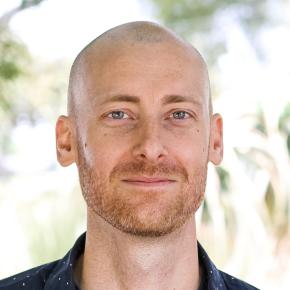This past weekend, after one of my talks, a young man approached me with some follow-up questions. I had just finished speaking on science and faith, which often generates good conversations afterwards. This was no exception.
Our conversation jumped around but finally centered on the origin of specified complexity. He agreed that the DNA molecule contains specified complexity. However, he also thought that the cement cinder blocks composing the walls of the hallway we were standing in contained the exact same complexity. At this point in the conversation, we had a problem. We weren’t working from the same definition.
Just the Facts
This was a great opportunity to apply the Just the Facts, Ma’am tactic. This young man was mistaken. He had bad intel. And to his credit, he admitted he was unfamiliar with the terminology.
To respond in these situations, we just need to appeal to the facts. Of course, this assumes that we know the facts.
In this particular situation, I was ready with the facts. That is, I was familiar with the distinction between mere complexity and specified complexity. But that isn’t always the case. Sometimes I need to go find the facts. When I do, there are invaluable resources I turn to. One of those is the Dictionary of Christianity and Science, edited by Paul Copan, Tremper Longman III, Christopher Reese, and Michael Strauss.
This volume draws upon the knowledge of over 140 leading scholars and contains hundreds of introductory essays on various topics related to the intersection of science and faith. Topics like Adam and Eve, evolution, miracles, Big Bang theory, multiverse, and string theory are all clarified and discussed. And if you want to go deeper, each article includes a list of resources for further study.
So, what is the difference between mere complexity and specified complexity? Here’s a snippet taken from the section titled “Specified Complexity” written by William Dembski:
Consider a typical mountain. Through the effects of weathering and erosion, the mountain is highly complex. Indeed, it would take many terabytes of computer memory to record where every nook and cranny of that mountain is. But consider next Mount Rushmore. Its rock face is also complex. But unlike the typical mountain, it also matches an independently given pattern; that is, it matches the appearance of four US presidents. Mount Rushmore, unlike a typical mountain, is therefore also specified and thus exhibits specified complexity.
The term specified complexity is now over 40 years old, and the concept itself is even older. Biologist Leslie Orgel first used the term in his 1973 book The Origins of Life: “Living organisms are distinguished by their specified complexity. Crystals such as granite fail to qualify as living because they lack complexity; mixtures of random polymers fail to qualify because they lack specificity” (Orgel 1973, 189).
Back to the Conversation
Before we could begin to talk about the cause of the origin of specified complexity, we had to get the terms straight. Fortunately, there are works like the Dictionary of Christianity and Science that will help.
One of the essential skills of every good ambassador for Christ is knowledge. We need to get the facts right. This doesn’t mean you need to know everything. But you should be able to access crucial information when the time comes. For me, that means having a reliable resource like this on my shelf.

